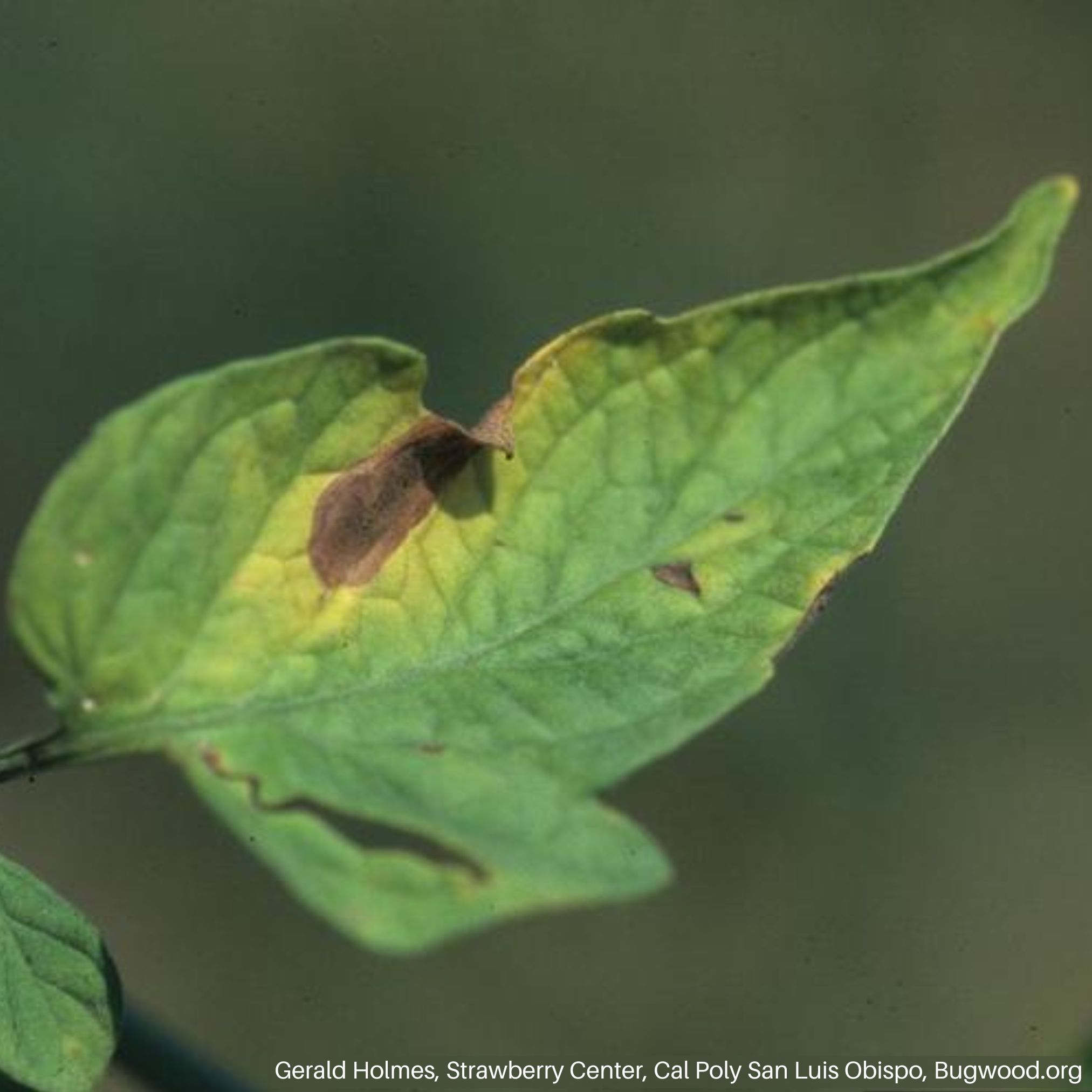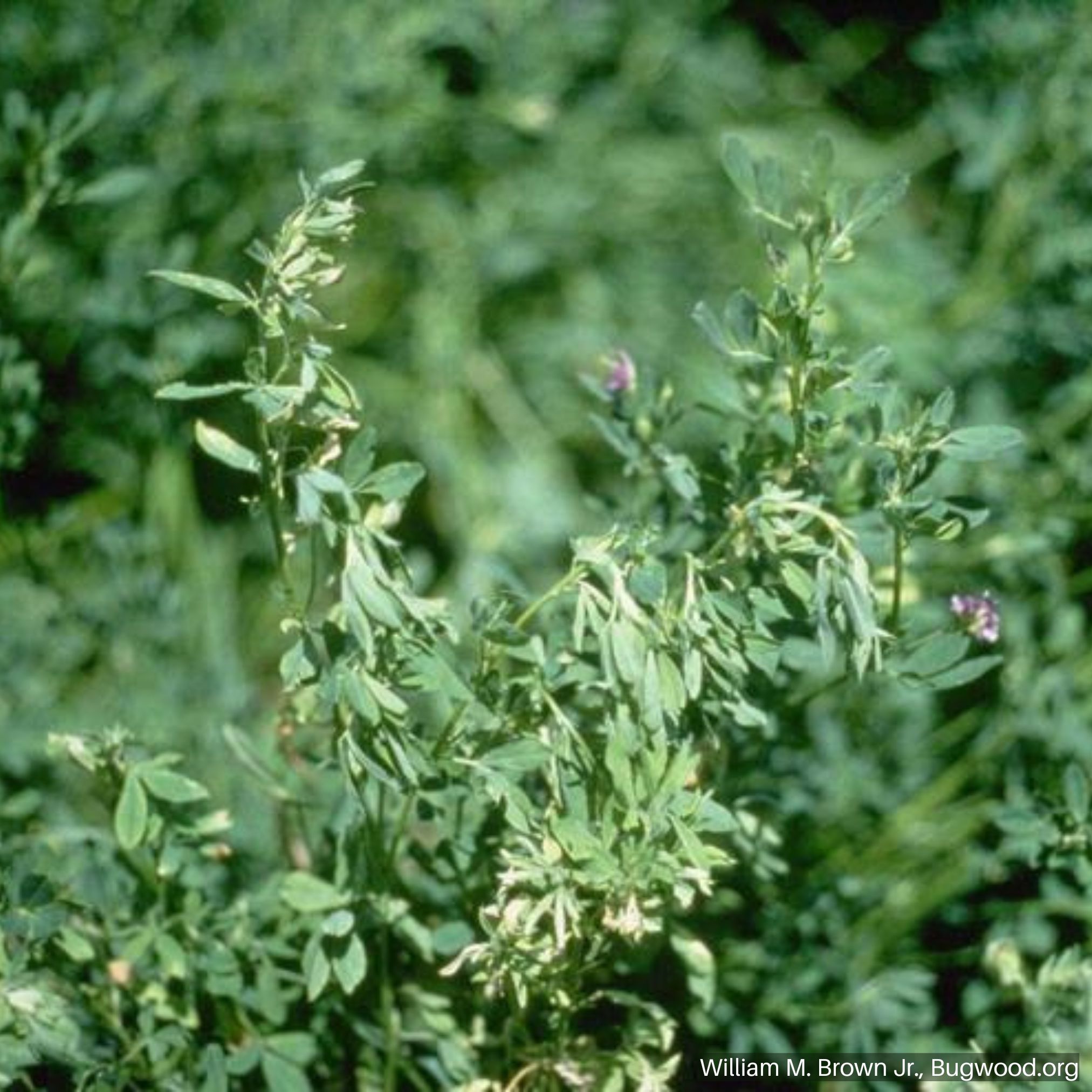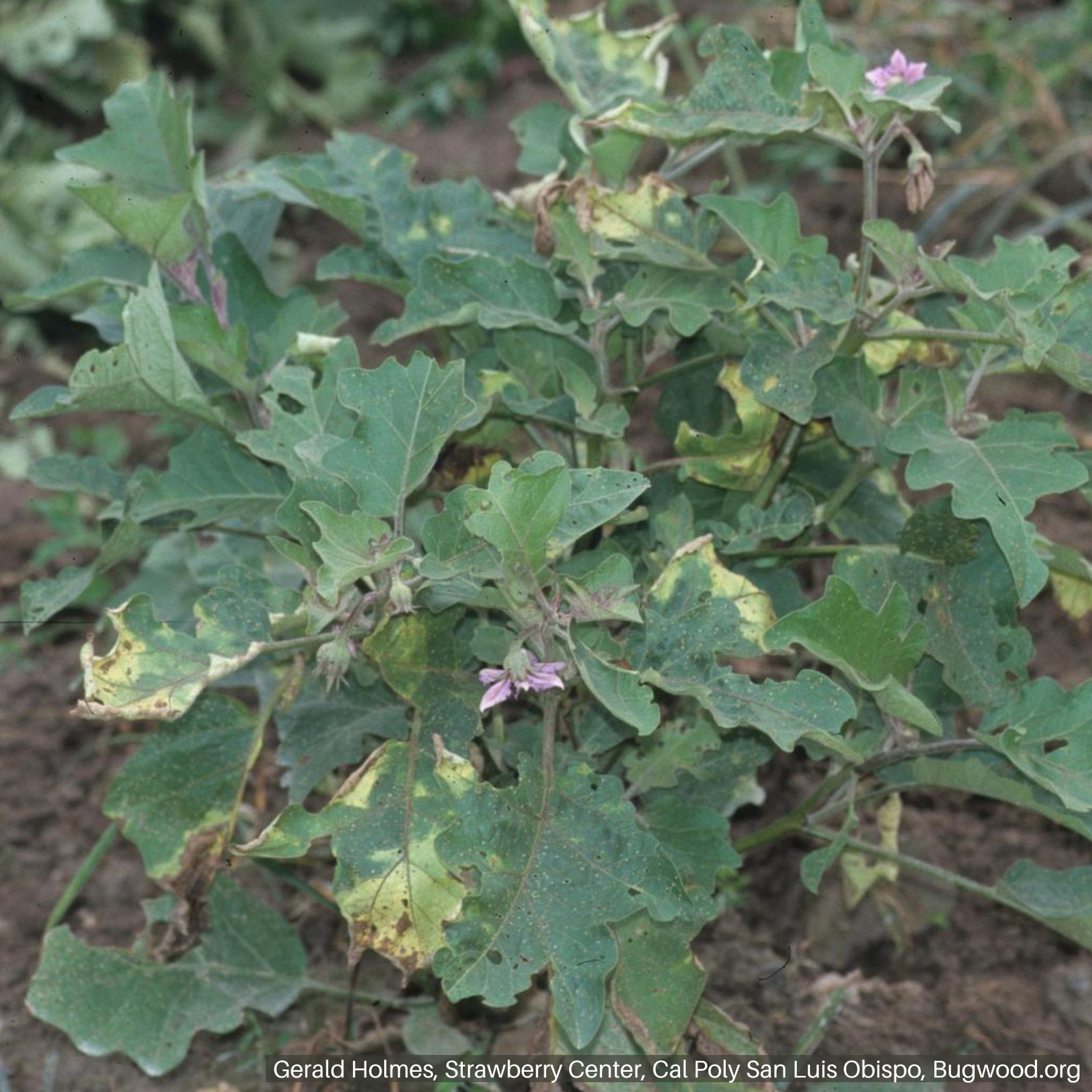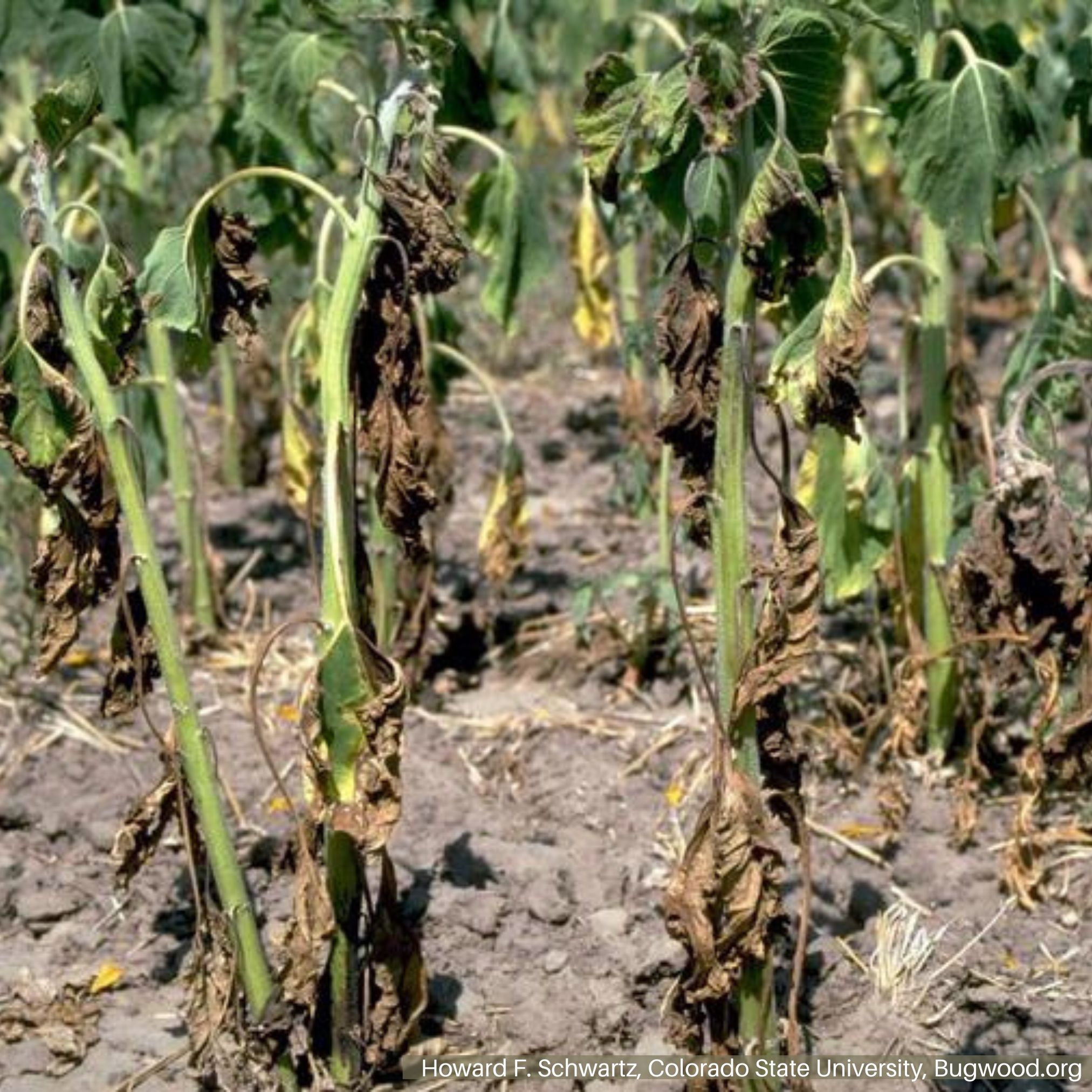Verticillium Wilt
HOSTS
- Cucurbits
- Solanaceae Crops
- Potato
- Many crop, ornamental, and weed species
OVERVIEW
Verticillium wilt in vegetables is caused by fungi Verticillium dahliae and Verticillium albo-atrum. This disease is widespread in Utah cantaloupe, eggplant, pepper, potato, and tomato production and occasional in squash and pumpkin.
BIOLOGY
Verticillium wilt is soilborne. The pathogen can survive for many years in plant debris or soil as microsclerotium (hard black ball of fungal tissue). Microsclerotia can survive for a decade or more in the soil, waiting for a suitable host to be planted. In wet conditions where the temperature is within 70 °F to 85 °F, the microsclerotium germinate and infects plant tissue by penetrating the root tissue or through pre-existing wounds. The pathogen invades the host's the vascular tissue and colonizes the plant from the bottom up. The pathogen is released back into the soil when the host plant dies and decays.SYMPTOMS
- Leaves yellow and die, starting at the bottom of the plant.
- Decreased fruit quality.
- Premature plant wilt and death.
- Symptoms that are expressed on one side of a plant, branch, or leaflets.
SCOUTING
- Scout for Verticillium wilt throughout the growing season.
- Watch for symptoms during cooler temperatures (68-74°F).
GENERAL MANAGEMENT
- Use resistant varieties when available.
- Plant on raised beds for better water drainage
- Avoid planting into fields known to have had Verticillium.
- Prevent injury to plant roots during planting and during field maintenance.
- Practice good sanitation by cleaning and sanitizing equipment and tools.
- Remove diseased plants to prevent spread from plant to plant.
- Rotate recently infested fields to other crops that are less/non-susceptible.
FUNGICIDES
There are no chemical controls for Verticillium wilt.
Precautionary Statement: Utah State University and its employees are not responsible for the use, misuse, or damage caused by application or misapplication of products or information mentioned in this document. All pesticides are labeled with ingredients, instructions, and risks, and not all are registered for edible crops. “Restricted use” pesticides may only be applied by a licensed applicator. The pesticide applicator is legally responsible for proper use. USU makes no endorsement of the products listed in this publication.





